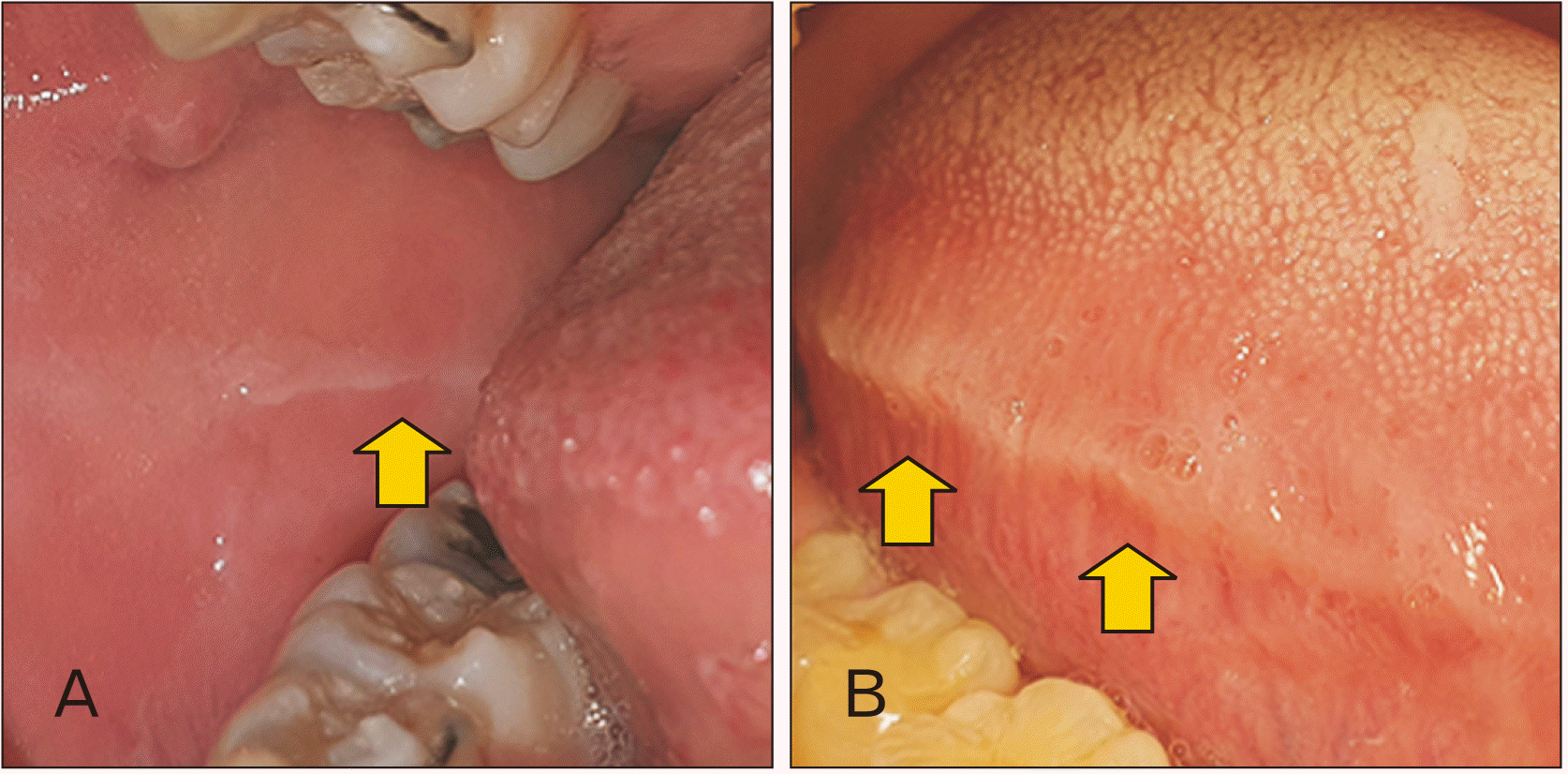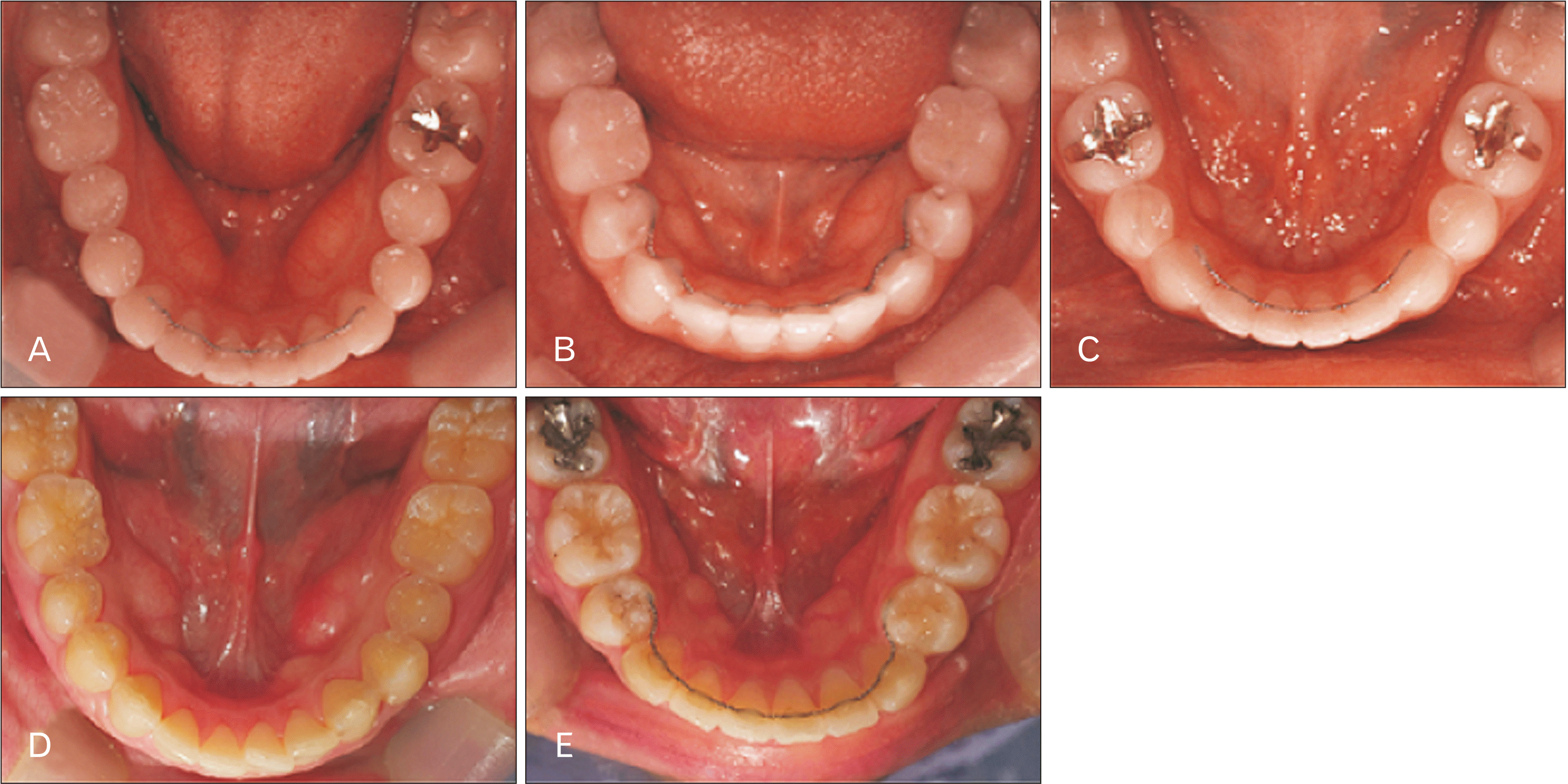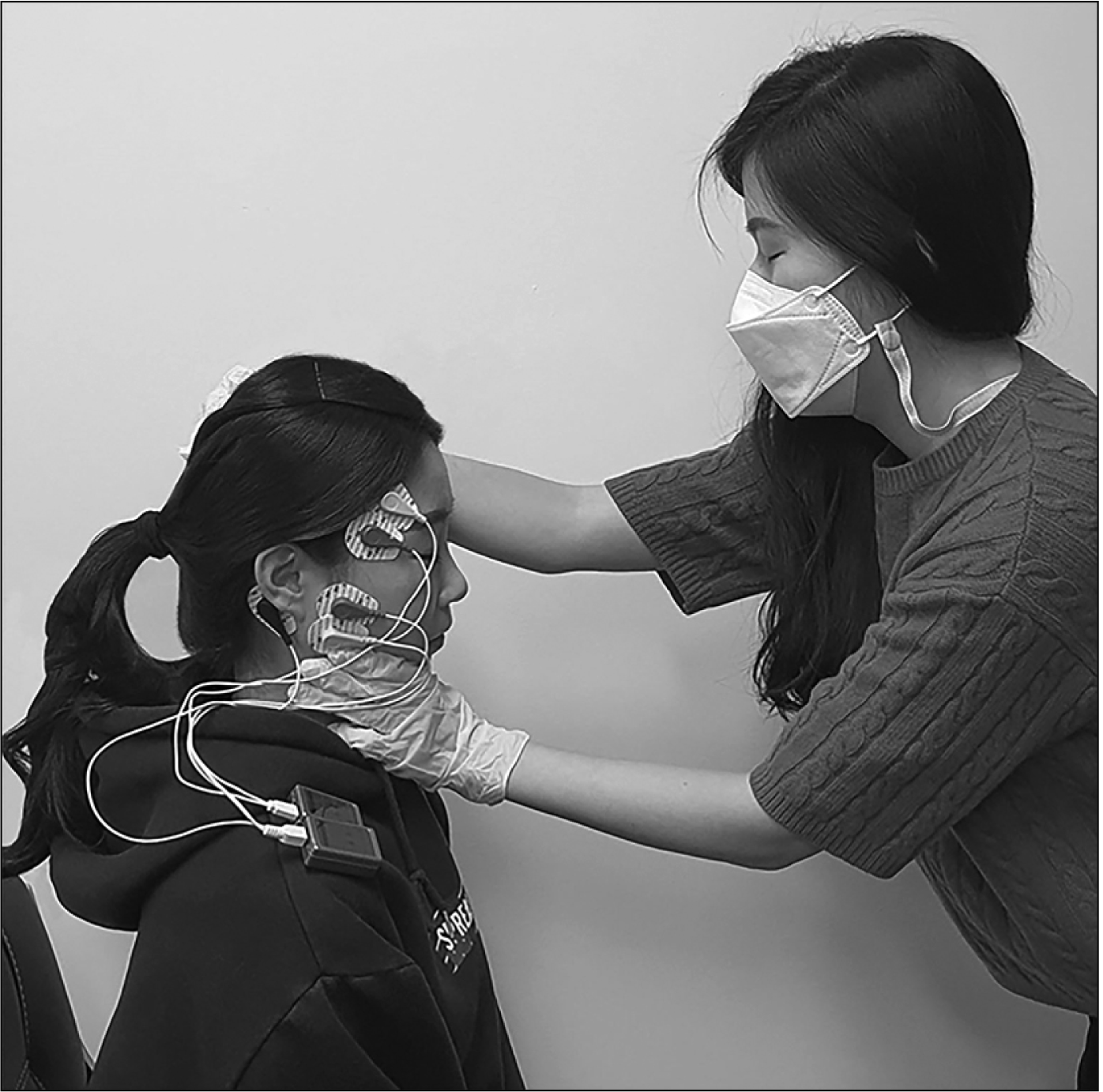1. Carlsson GE, Droukas B. 1984; Dental occlusion and the health of the masticatory system. J Craniomandib Pract. 2:141–7. DOI:
10.1080/07345410.1984.11677859.

3. Korean Oral Anatomy Research Group. 2017. Oral anatomy. Komoonsa;Seoul:
4. Kim TH, Kim DH. 2019; The effects of head rotation and tilt on oral pressure and muscle activity. Anat Cell Biol. 52:378–84. DOI:
10.5115/acb.19.191. PMID:
31949975. PMCID:
PMC6952685.

6. Yoon HR, Choi YJ, Kim KH, Chung CR. 2010; Comparisons of occlusal force according to occlusal relationship, skeletal pattern, age and gender in Koreans. Korean J Orthod. 40:304–13. DOI:
10.4041/kjod.2010.40.5.304.

7. Kim HB, Bae SS. 1998; Clinical application of electromyography and nerve conduction study. J Korean Phys Ther Sci. 5:603–16.
8. Takeuchi-Sato T, Arima T, Mew M, Svensson P. 2019; Relationships between craniofacial morphology and masticatory muscle activity during isometric contraction at different interocclusal distances. Arch Oral Biol. 98:52–60. DOI:
10.1016/j.archoralbio.2018.10.030. PMID:
30448395.

9. Custodio W, Gomes SG, Faot F, Garcia RC, Del Bel Cury AA. 2011; Occlusal force, electromyographic activity of masticatory muscles and mandibular flexure of subjects with different facial types. J Appl Oral Sci. 19:343–9. DOI:
10.1590/S1678-77572011005000008. PMID:
21655772. PMCID:
PMC4223785.

10. Langlais RP, Miller CS, Gehrig JS. 2017. Color atlas of common oral diseases. 5th ed. Jones & Bartlett Learning;Burlington:
11. Mizutani S, Ekuni D, Tomofuji T, Azuma T, Irie K, Machida T, Yoneda T, Iwasaki Y, Morita M. 2014; Factors related to the formation of buccal mucosa ridging in university students. Acta Odontol Scand. 72:58–63. DOI:
10.3109/00016357.2013.797102. PMID:
23692316. PMCID:
PMC3878356.

12. Piquero K, Ando T, Sakurai K. 1999; Buccal mucosa ridging and tongue indentation: incidence and associated factors. Bull Tokyo Dent Coll. 40:71–8. DOI:
10.2209/tdcpublication.40.71. PMID:
10825817.

13. Miyaura K, Matsuka Y, Morita M, Yamashita A, Watanabe T. 1999; Comparison of biting forces in different age and sex groups: a study of biting efficiency with mobile and non-mobile teeth. J Oral Rehabil. 26:223–7. DOI:
10.1046/j.1365-2842.1999.00364.x. PMID:
10194731.

14. Al Quran FA, Al-Dwairi ZN. 2006; Torus palatinus and torus mandibularis in edentulous patients. J Contemp Dent Pract. 7:112–9. DOI:
10.5005/jcdp-7-2-112. PMID:
16685302.

15. De Luca Canto G, Torres de Freitas S, Schuldt Filho G, de Sousa Vieira R. 2013; Association between mandibular torus and parafunctional activity. J Stomat Occ Med. 6:43–9. DOI:
10.1007/s12548-012-0064-5.

16. Pechenkina EA, Benfer RA Jr. 2002; The role of occlusal stress and gingival infection in the formation of exostoses on mandible and maxilla from Neolithic China. Homo. 53:112–30. DOI:
10.1078/0018-442X-00040. PMID:
12489411.

17. Reddy MS, Geurs NC, Wang IC, Liu PR, Hsu YT, Jeffcoat RL, Jeffcoat MK. 2002; Mandibular growth following implant restoration: does Wolff's law apply to residual ridge resorption? Int J Periodontics Restorative Dent. 22:315–21.
18. Shimomoto Y, Chung CJ, Iwasaki-Hayashi Y, Muramoto T, Soma K. 2007; Effects of occlusal stimuli on alveolar/jaw bone formation. J Dent Res. 86:47–51. DOI:
10.1177/154405910708600107. PMID:
17189462.

19. Fricton J. 2014; Temporomandibular disorders: a human systems approach. J Calif Dent Assoc. 42:523–33. discussion 531533–5. PMID:
25174211.
22. Okeson JP. Okeson JP, editor. 2013. Etiology of functional disturbances in the masticatory system. Management of Temporomandibular Disorders and Occlusion. Elsevier;St. Louis: p. 130–63.
23. Speciali JG, Dach F. 2015; Temporomandibular dysfunction and headache disorder. Headache. 55(Suppl 1):72–83. DOI:
10.1111/head.12515. PMID:
25644695.

24. Rani S, Pawah S, Gola S, Bakshi M. 2017; Analysis of Helkimo index for temporomandibular disorder diagnosis in the dental students of Faridabad city: a cross-sectional study. J Indian Prosthodont Soc. 17:48–52. DOI:
10.4103/0972-4052.194941. PMID:
28216845. PMCID:
PMC5308067.

25. Kim HS. 2013. The relationship between oral tori and temporomandibular joint symptoms and oral parafunctions [MS dissertation]. Yonsei University;Seoul:
26. Vitti M, Basmajian JV. 1975; Muscles of mastication in small children: an electromyographic analysis. Am J Orthod. 68:412–9. DOI:
10.1016/0002-9416(75)90182-7. PMID:
1058639.

27. Ahlgren J, Sonesson B, Blitz M. 1985; An electromyographic analysis of the temporalis function of normal occlusion. Am J Orthod. 87:230–9. DOI:
10.1016/0002-9416(85)90044-2. PMID:
3856396.

28. Lee HJ, Lee YW. 2019; Correlation between cyclists' quadriceps femoris thickness and isokinetic strength. Korean J Sport. 17:1617–24.
30. Gould MS, Picton DC. 1968; A study of pressures exerted by the lips and cheeks on the teeth of subjects with angle's class II division 1, clss II division 2 and class 3 malocclusions compared with those of subjects with normal occlusions. Arch Oral Biol. 13:527–41. DOI:
10.1016/0003-9969(68)90113-1.
31. Tallgren A, Melsen B, Hansen MA. 1979; An electromyographic and roentgen cephalometric study of occlusal morphofunctional disharmony in children. Am J Orthod. 76:394–409. DOI:
10.1016/0002-9416(79)90225-2. PMID:
291342.

33. Yang KY, Han KS, Yeo IS. 2003; Masticatory muscle activity and bite force according to head postureand clenching level. J Oral Med Pain. 28:249–59.
34. van Boxtel A, Boelhouwer AJ, Bos AR. 1998; Optimal EMG signal bandwidth and interelectrode distance for the recording of acoustic, electrocutaneous, and photic blink reflexes. Psychophysiology. 35:690–7. DOI:
10.1111/1469-8986.3560690. PMID:
9844430.

35. Schmid-Schwap M, Bristela M, Kundi M, Piehslinger E. 2013; Sex-specific differences in patients with temporomandibular disorders. J Orofac Pain. 27:42–50. DOI:
10.11607/jop.970. PMID:
23424719.

36. Santana-Mora U, Cudeiro J, Mora-Bermúdez MJ, Rilo-Pousa B, Ferreira-Pinho JC, Otero-Cepeda JL, Santana-Penín U. 2009; Changes in EMG activity during clenching in chronic pain patients with unilateral temporomandibular disorders. J Electromyogr Kinesiol. 19:e543–9. DOI:
10.1016/j.jelekin.2008.10.002. PMID:
19041265.

37. Raphael KG, Janal MN, Sirois DA, Svensson P. 2013; Effect of contingent electrical stimulation on masticatory muscle activity and pain in patients with a myofascial temporomandibular disorder and sleep bruxism. J Orofac Pain. 27:21–31. DOI:
10.11607/jop.1029. PMID:
23424717.

38. Santiago V, Raphael K. 2019; Absence of joint pain identifies high levels of sleep masticatory muscle activity in myofascial temporomandibular disorder. J Oral Rehabil. 46:1161–9. DOI:
10.1111/joor.12853. PMID:
31271666. PMCID:
PMC8662550.

39. Wei F, Van Horn MH, Coombs MC, She X, Gonzales TS, Gonzalez YM, Scott JM, Iwasaki LR, Nickel JC, Yao H. 2017; A pilot study of nocturnal temporalis muscle activity in TMD diagnostic groups of women. J Oral Rehabil. 44:517–25. DOI:
10.1111/joor.12517. PMID:
28449265. PMCID:
PMC5499232.

40. Valentino R, Cioffi I, Vollaro S, Cimino R, Baiano R, Michelotti A. 2021; Jaw muscle activity patterns in women with chronic TMD myalgia during standardized clenching and chewing tasks. Cranio. 39:157–63. DOI:
10.1080/08869634.2019.1589703. PMID:
30896353.

41. Han DH, Park DY, Kim BI, Koh MY, Ahn YW, Kim JB. 2011; Global self-rating of oral health, concerns about oral health, and history of jaw injury related to temporomandibular joint symptoms in Korean adults. J Orofac Pain. 25:308–16. PMID:
22247926.
42. Choi Y, Park H, Lee JS, Park JC, Kim CS, Choi SH, Cho KS, Chai JK, Jung UW. 2012; Prevalence and anatomic topography of mandibular tori: computed tomographic analysis. J Oral Maxillofac Surg. 70:1286–91. DOI:
10.1016/j.joms.2011.12.009. PMID:
22310453.







 PDF
PDF Citation
Citation Print
Print





 XML Download
XML Download